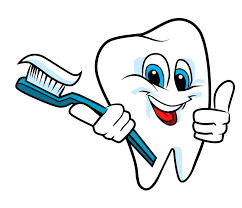SOFT/MEDIUM OR HARD TOOTHBRUSH
There’s a common
misconception that hard bristled toothbrushes clean better.
The truth is, they can actually damage your
teeth and gums.
Hard
bristles are great at removing plaque and stain, but they also wear down something you don’t want to lose -- your tooth enamel.
Hard bristles
can also damage your gums and eventually cause them to recede.
When gums recede and the root surface of the tooth is
exposed----------sensitivity----- ---- damage to supporting
bone-----&----within a span of time loose teeth.
SOFT TOOTHBRUSH IS AS EFFECTIVE AS A HARD TOOTHBRUSH:
A soft/medium tooth brush is best because the bristles will bend and flex around the teeth and gums to better remove the plaque better
By brushing thoroughly but gently with a soft/medium bristled brush, you can get rid of bad bacteria but keep your teeth’s natural layer of protection called the enamel intact.
A soft/medium tooth brush is best because the bristles will bend and flex around the teeth and gums to better remove the plaque better
By brushing thoroughly but gently with a soft/medium bristled brush, you can get rid of bad bacteria but keep your teeth’s natural layer of protection called the enamel intact.
If it you’re worried you won’t get your
teeth as clean with a soft/medium toothbrush, it may be time to focus on your brushing
technique. To clean teeth and gums most effectively, angle your toothbrush
bristles toward the gum line, and use gentle, circular, massaging strokes to
remove plaque. Gentle pressure is all that’s needed to remove plaque,
Changing your toothbrush every 3 to 4 months .  The
longer you keep the same toothbrush, the more bacteria it accumulates. Plus,
it’s hard to get in all the nooks and crannies of your mouth with bent, fraying
bristles. :
The
longer you keep the same toothbrush, the more bacteria it accumulates. Plus,
it’s hard to get in all the nooks and crannies of your mouth with bent, fraying
bristles. :
Don't share toothbrushes.
Rinse your toothbrush
thoroughly
with tap water after use, making sure to remove any toothpaste and debris.
Store your toothbrush in an upright
position, and let it air dry:Never store a toothbrush in a toothbrush
holder at home-the chronically moist environment can promote bacteria growth.
If you must use a covered toothbrush holder frequently, look for one with small
holes to let air in.Keep your
toothbrush in an upright position, and let it air dry.
Keep it covered on the road, but not at home:
When you travel, put your toothbrush in a travel toothbrush holder-don’t let it roll around uncovered in your suitcase or toiletry bag where it can pick up dust, dirt, and bacteria
Consider
a sanitizer :If you want to try a sanitizer,
look for one that has been approved by the Food and Drug Administration for
"reducing bacterial contamination that occurs naturally on
toothbrushes.''
No comments:
Post a Comment